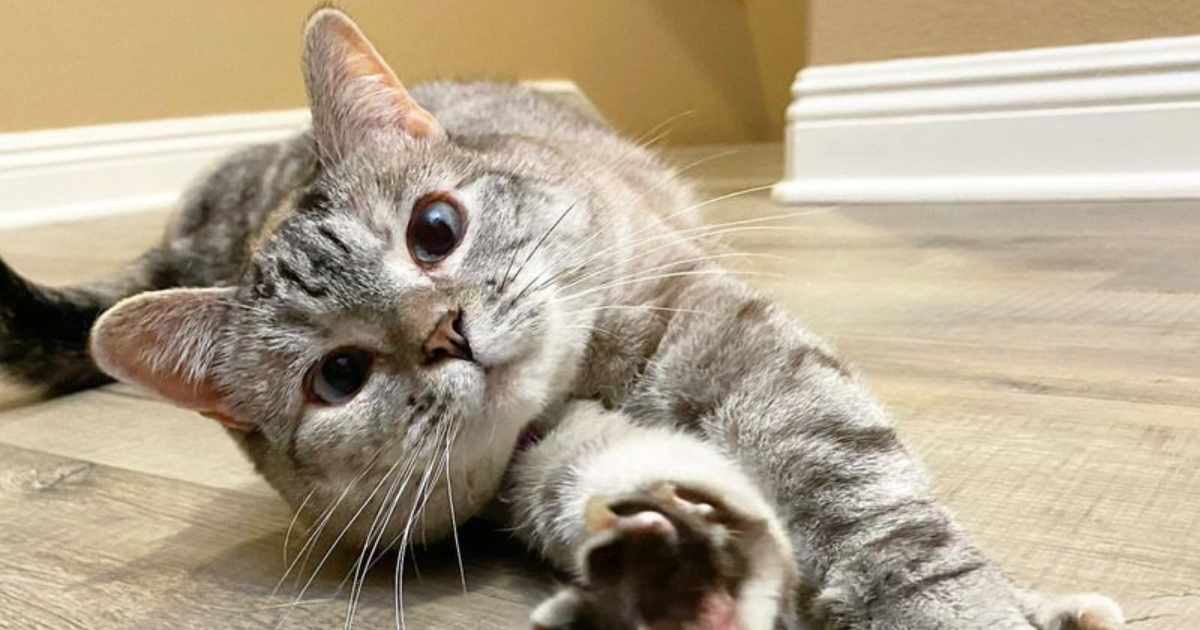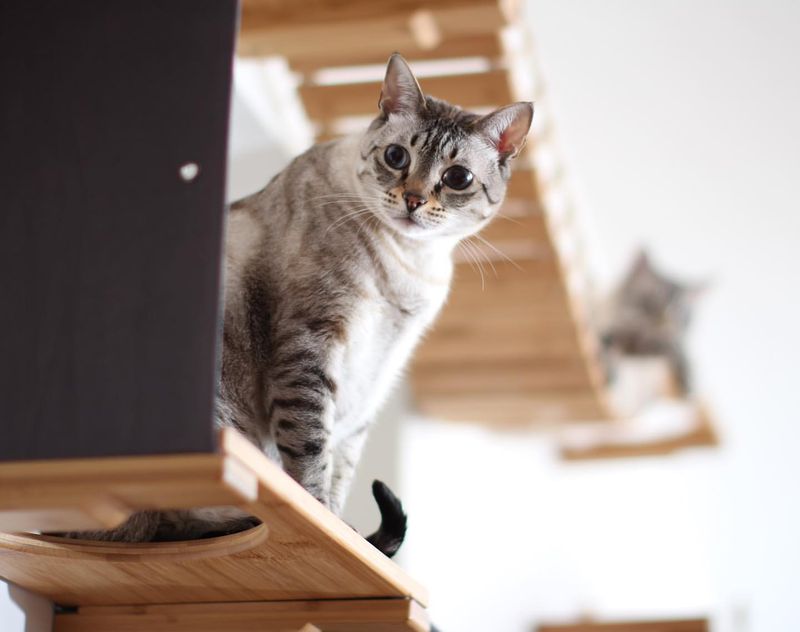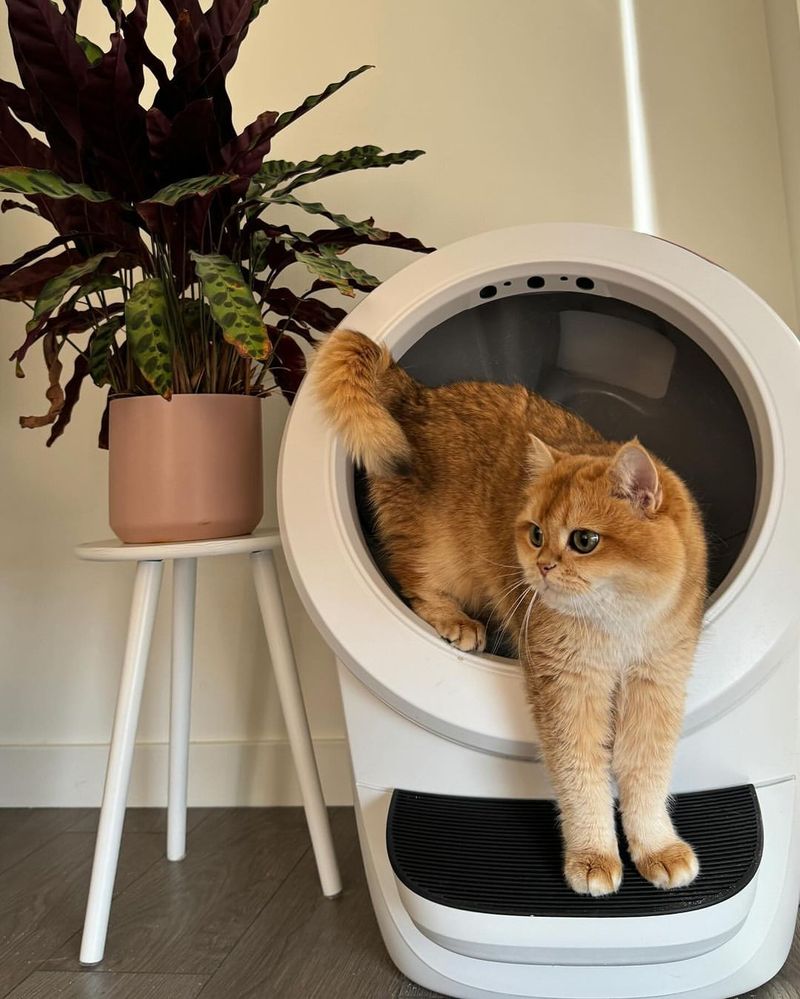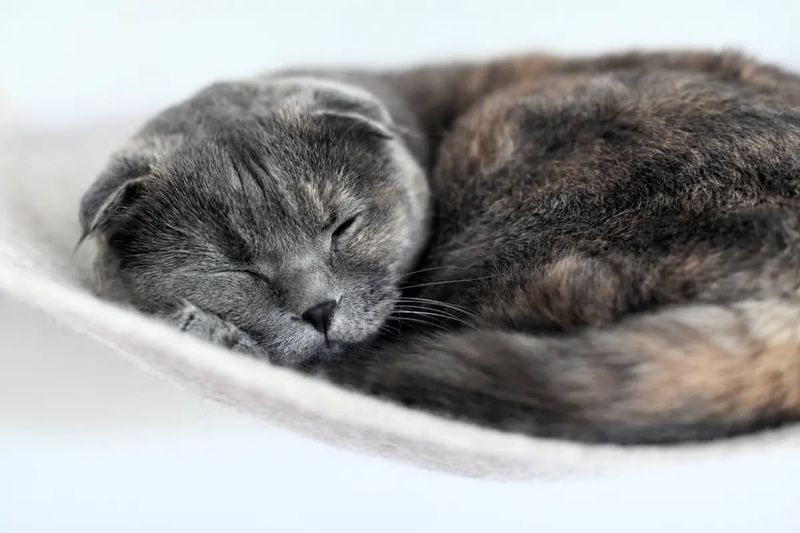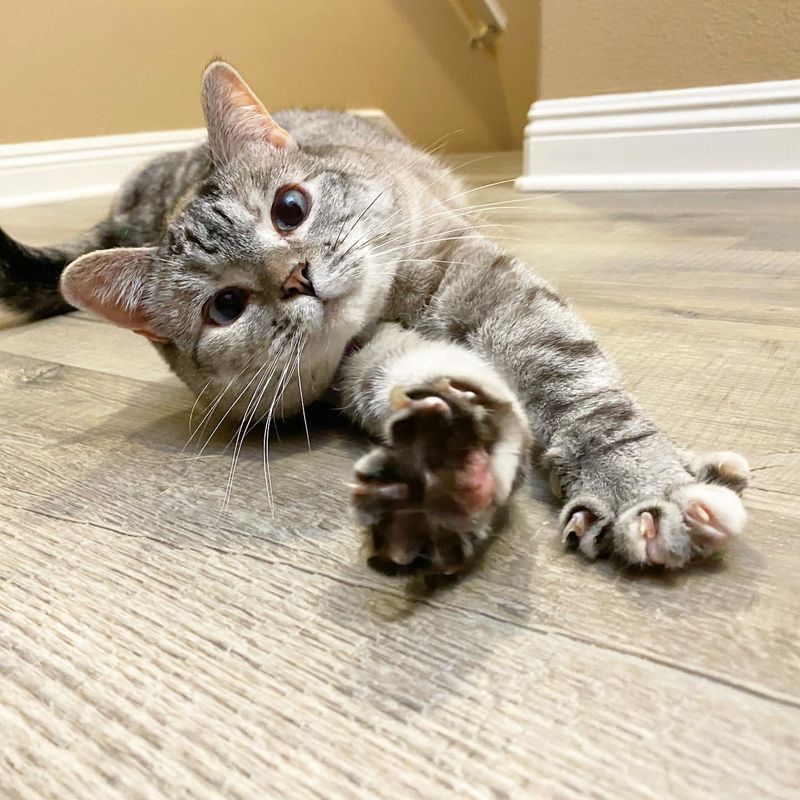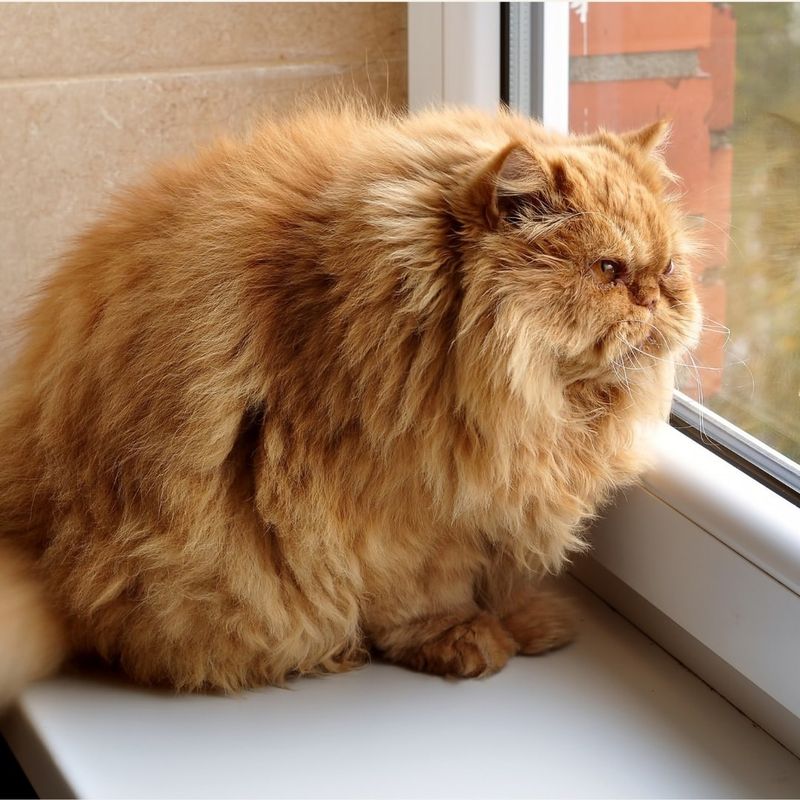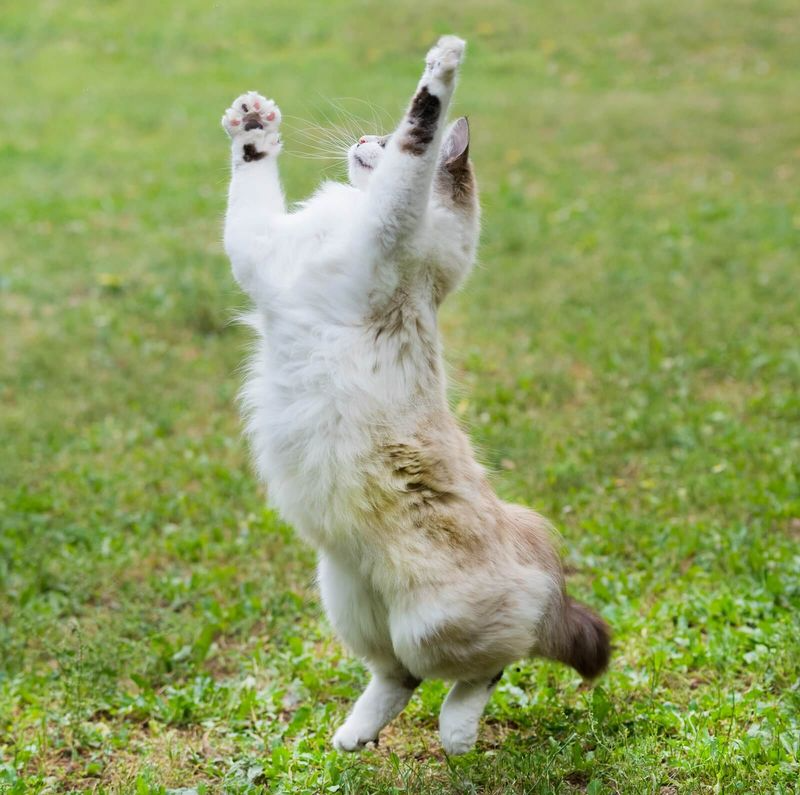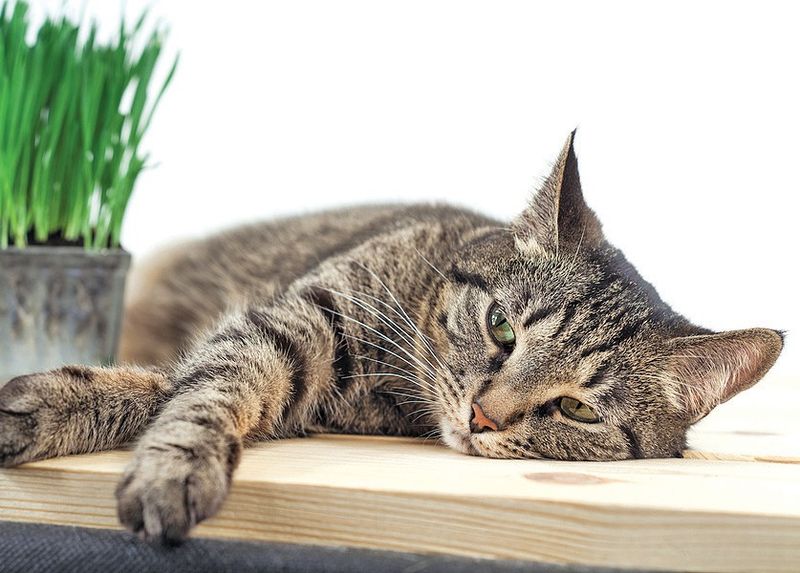📖 Table of Content:
Arthritis in cats is a common but often overlooked condition that can significantly impact their comfort, mobility, and overall quality of life.
While cats are masters of hiding pain and discomfort, arthritis can silently creep in, making even their favorite activities, like jumping onto a windowsill or chasing a toy, difficult or painful. As a caring and attentive cat owner, recognizing the subtle signs of arthritis early can make a world of difference.
By understanding how this condition affects your feline friend, you can take proactive steps to create an environment that supports their well-being.
This guide will help you identify the most common signs of arthritis in cats and provide practical tips to keep them comfortable, mobile, and happy throughout their golden years.
1. Changes in Mobility
One of the most noticeable signs of arthritis in cats is changes in their mobility. Cats may start avoiding jumping onto furniture or climbing stairs, which was once a breeze for them. You might notice your feline friend hesitating or taking longer to reach their favorite perch.
These changes occur because the joints become stiff and painful, making movements that require agility and strength difficult. Pay attention if your cat seems more sedentary, opting to stay on the floor instead of their usual high spots.
To help your cat, consider providing ramps or steps to assist them in reaching elevated areas. Adding soft, supportive bedding at ground level can also offer comfort. Encouraging gentle play and regular vet check-ups will aid in maintaining their mobility and overall well-being.
2. Altered Grooming Habits
Arthritis can significantly affect a cat’s grooming habits, often leading to a less tidy appearance. If you notice your cat’s coat becoming matted or oily, it could be a sign they’re struggling to groom themselves due to joint pain.
Cats with arthritis may also have difficulty reaching certain parts of their bodies, leading to areas of their fur being unkempt or shedding more than usual. This change in grooming can be distressing for cats, who are naturally fastidious creatures.
To assist, regularly brush your cat to remove loose fur and prevent matting. Use gentle strokes to avoid discomfort. Consider consulting with your vet about supplements that promote joint health. This support can make a big difference in maintaining your cat’s comfort and cleanliness.
3. Changes in Litter Box Habits
Alterations in litter box habits can be a telltale sign of arthritis in cats. Cats may start soiling outside the box or show reluctance to enter it due to the pain of climbing in and out.
If your cat begins to urinate or defecate outside of their litter box, it’s crucial to consider arthritis as a potential cause, especially if the box has high sides. The discomfort might make them seek easier alternatives, leading to these accidents.
To help, ensure the litter box is easily accessible, with low sides to reduce the need for climbing. Consider placing additional litter boxes around the house to provide your cat with more options. Regular cleaning and monitoring can prevent further complications and improve their comfort.
4. Increased Irritability
Increased irritability or aggression can be a direct result of arthritis pain in cats. If your usually friendly cat starts showing signs of discomfort when touched or becomes withdrawn, it could be due to joint pain.
This irritability often stems from the frustration of not being able to move freely or play as they used to. Cats may hiss, swat, or bite when their painful areas are touched or even when approached unexpectedly.
Approaching your cat gently and respecting their space can help reduce stress. Provide them with warm resting places and consult your vet about pain management options. These steps can help improve their mood and overall quality of life.
5. Muscle Atrophy
Muscle atrophy is a common occurrence in cats suffering from arthritis. As they move less to avoid pain, their muscles can weaken over time, leading to noticeable thinning in areas like the legs and hips.
This weakening of muscles can exacerbate the cycle of pain and reduced mobility, making it even harder for your cat to perform daily activities. Observing your cat closely for signs of muscle loss can be crucial in early detection of arthritis.
Encouraging gentle physical activity, such as short walks or play sessions, can help maintain muscle tone. Additionally, providing a diet rich in omega-3 fatty acids and consulting your vet for tailored supplements can support muscle health and overall joint function.
6. Stiffness After Resting
Cats with arthritis often exhibit stiffness, especially after resting or sleeping. This stiffness can make it difficult for them to get up and move around, and it may take a while for them to loosen up.
You might notice your cat stretching more frequently or moving gingerly when they first wake up. This stiffness is due to inflammation in the joints, which can be particularly pronounced after periods of inactivity.
Helping your cat by providing warm, comfortable sleeping areas can ease stiffness. Gentle massage and encouraging regular, light activity can also promote flexibility. Discussing anti-inflammatory options with your vet can provide additional relief and improve your cat’s comfort and mobility.
7. Weight Gain
Weight gain is a common issue in cats with arthritis, as their reduced activity levels make them prone to gaining extra pounds. This additional weight can exert more pressure on their already painful joints, worsening the condition.
Maintaining a healthy weight is crucial for managing arthritis symptoms. Overweight cats are at higher risk of developing further health issues, making weight management an essential part of their care.
Ensuring a balanced diet and controlled portion sizes can help keep your cat’s weight in check. Encourage activity with interactive toys and consult your vet for a diet plan tailored to your cat’s specific needs. This approach can greatly enhance their quality of life and reduce arthritis-related discomfort.
8. Difficulty Jumping
Cats with arthritis often find jumping challenging, a noticeable contrast to their usual agility. If your cat hesitates or avoids jumping onto furniture, it could be due to joint pain.
This reluctance to jump can affect their daily routine, as cats love exploring vertical spaces. You might see them looking longingly at a spot they used to frequent but now avoid.
Providing alternative routes, like pet stairs or ramps, can help them access their favorite spots without discomfort. Encouraging light exercise and monitoring their condition with regular vet visits can also support their mobility.
9. Decreased Interest in Play
Have you noticed your feline friend sitting idly by while their favorite toy dangles enticingly? This could be an early sign of arthritis. Cats that once pounced with the energy of a young kitten may now hesitate, preferring to watch from the sidelines.
This change isn’t just a sign of aging; it might indicate discomfort in their joints. Imagine your cat gingerly moving, avoiding the spirited leaps and bounds that once thrilled them.
This decrease in playful behavior can be heart-wrenching to observe, but it signals the need for a vet consultation to manage potential arthritic pain.
10. Hiding or Withdrawal
Is your cat becoming a recluse, favoring solitude over socializing? Cats often retreat to quiet, undisturbed places when they’re uncomfortable. This behavior change can be subtle yet significant, signaling the onset of arthritis.
The once sociable feline may suddenly start seeking out hidden nooks and crannies, avoiding interaction. This withdrawal is not just a mood shift; it’s a protective mechanism against pain.
If your cat’s hiding more than usual, it’s time to investigate further. Consulting with a vet can help identify the issue and ensure your cat’s comfort and health.
